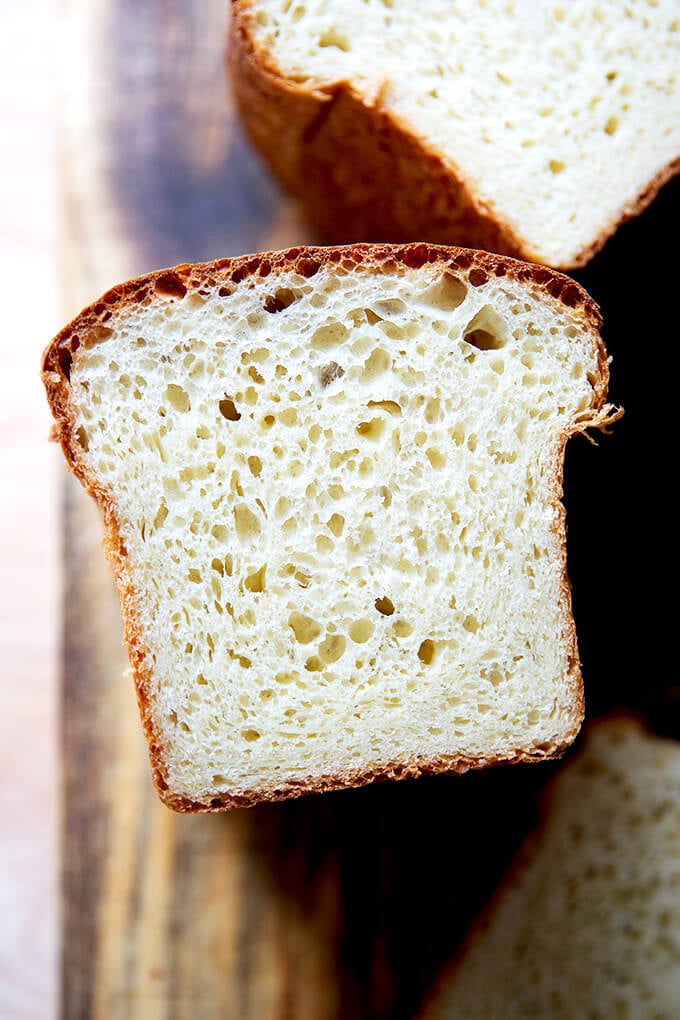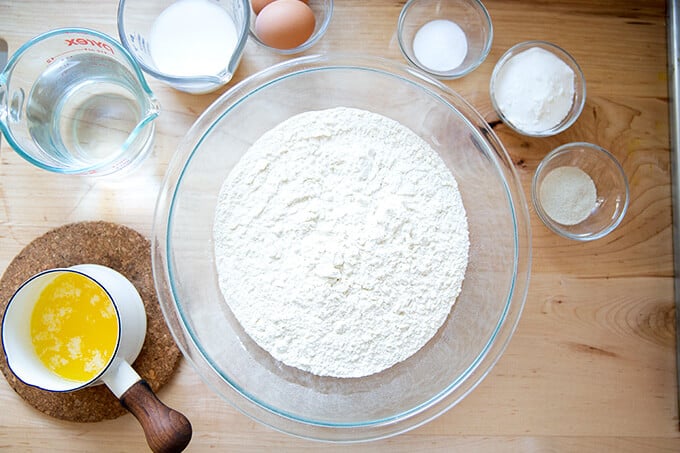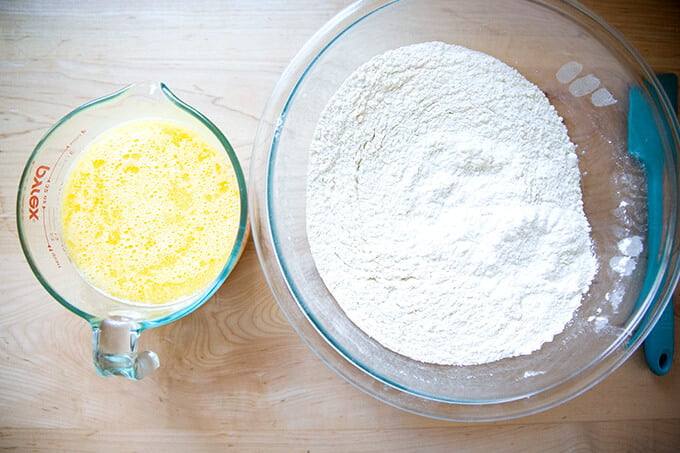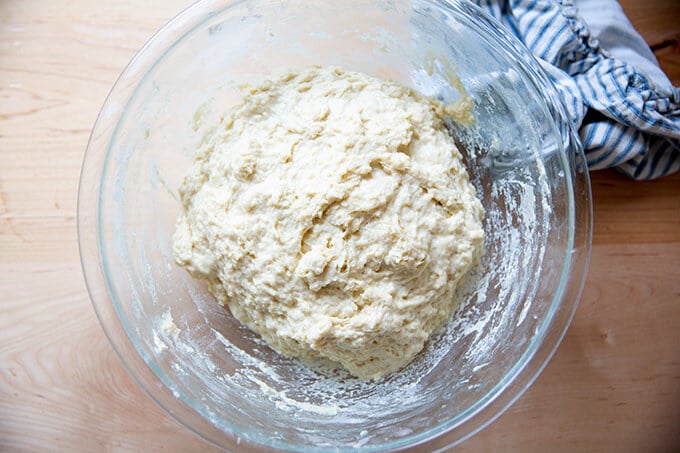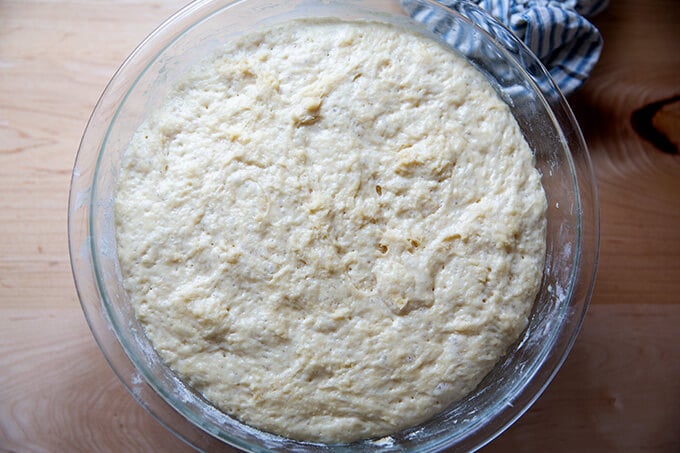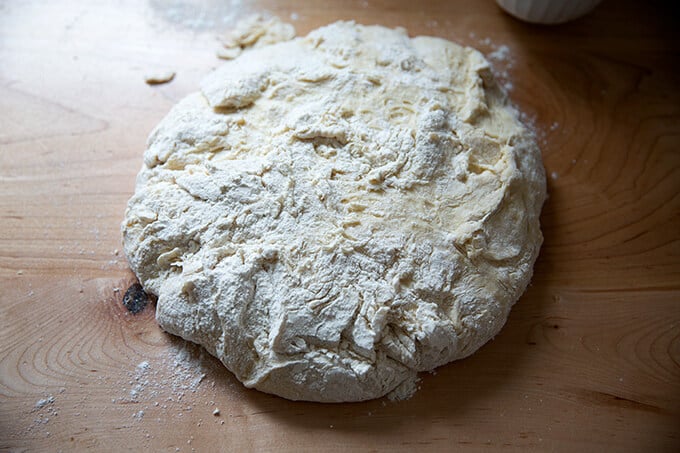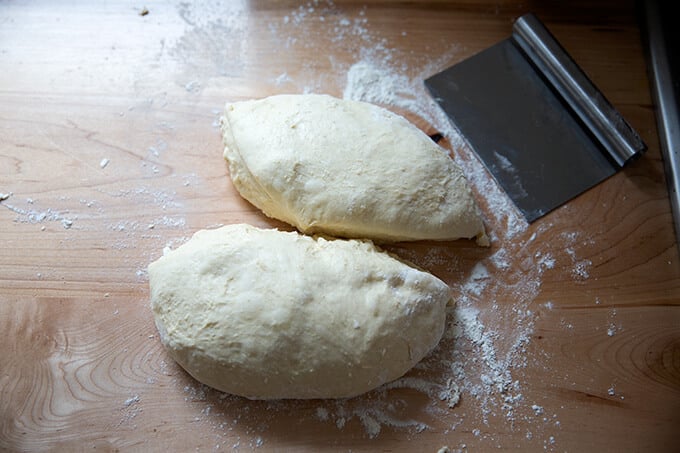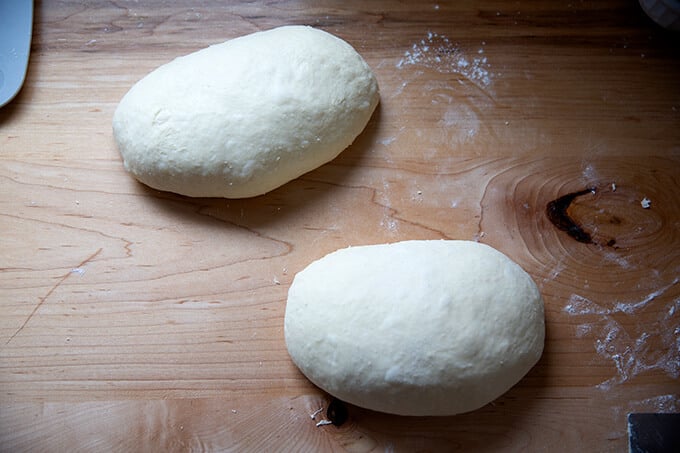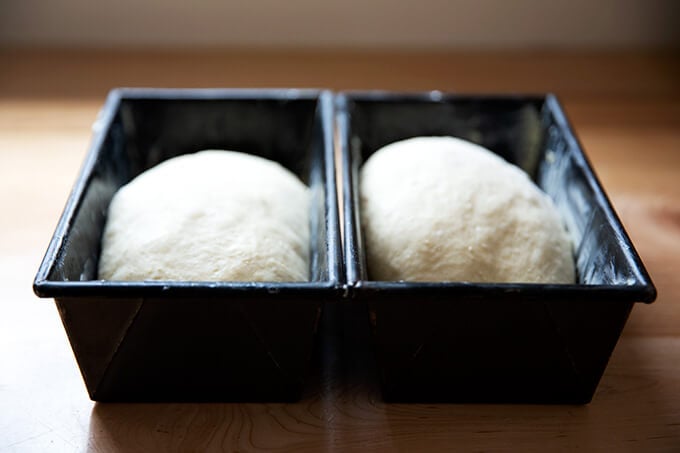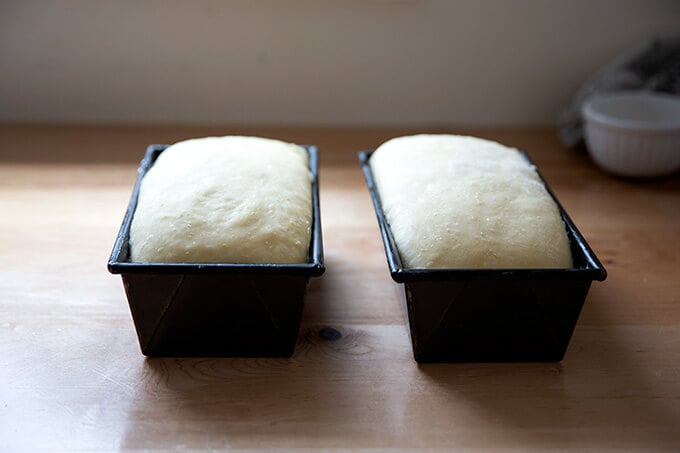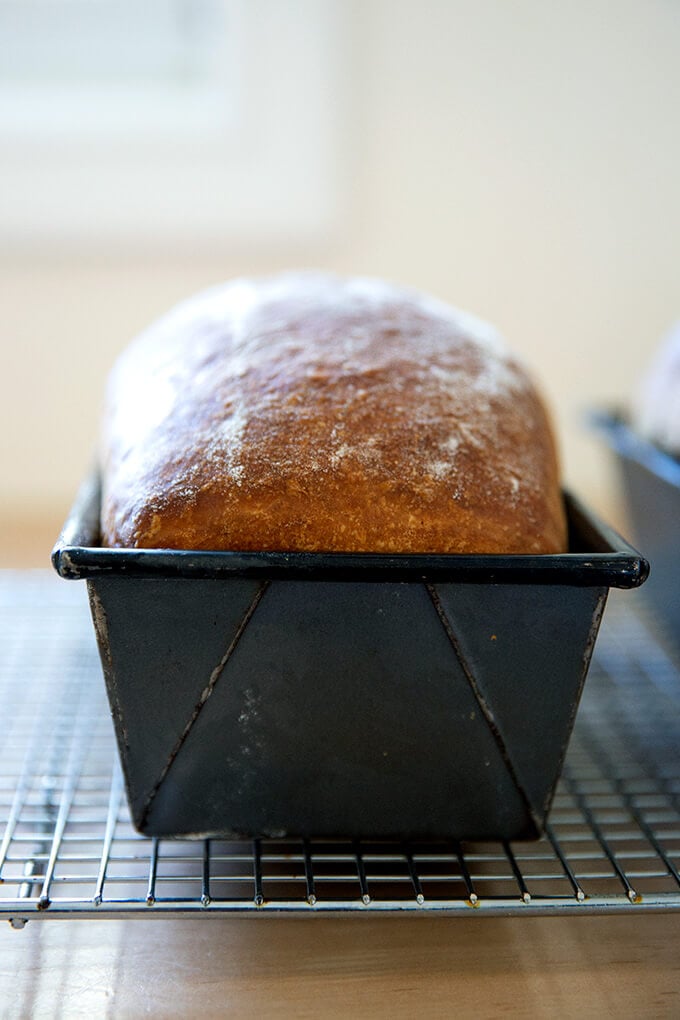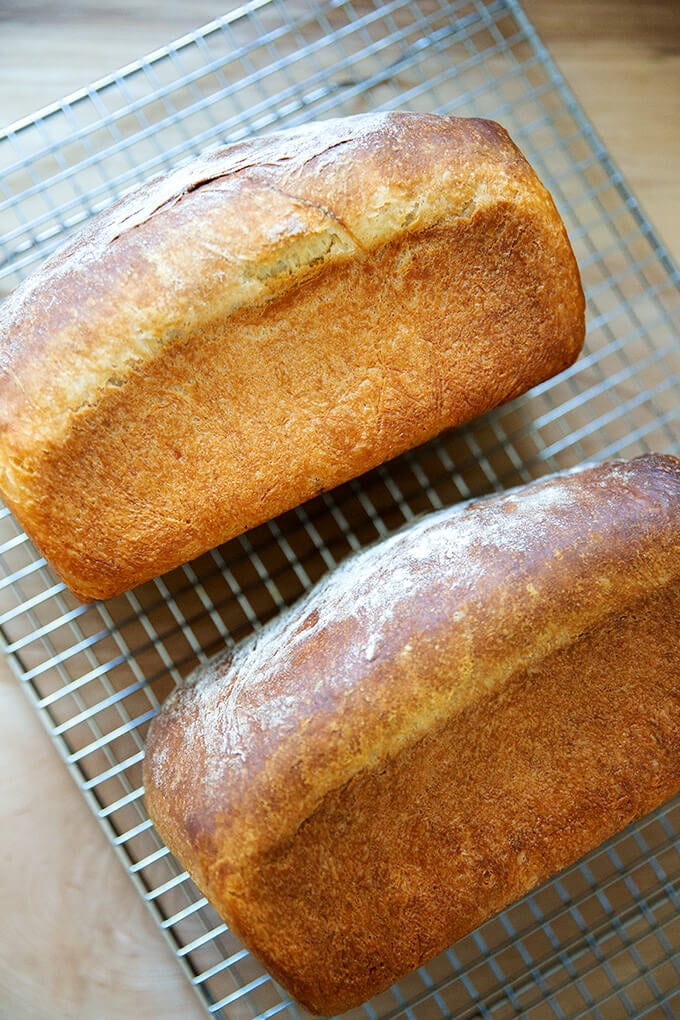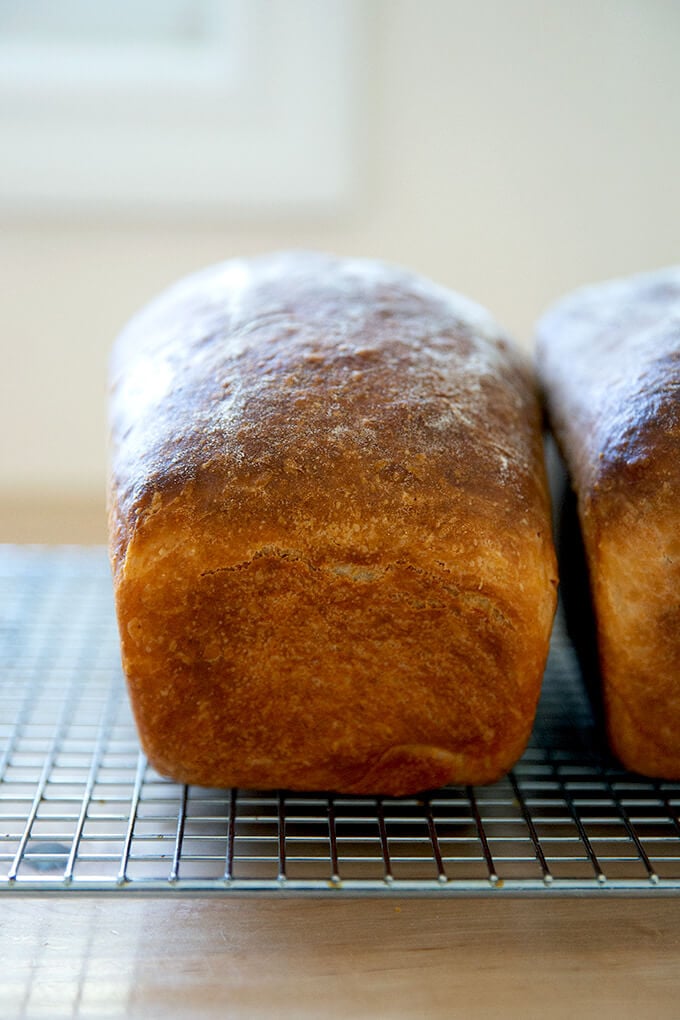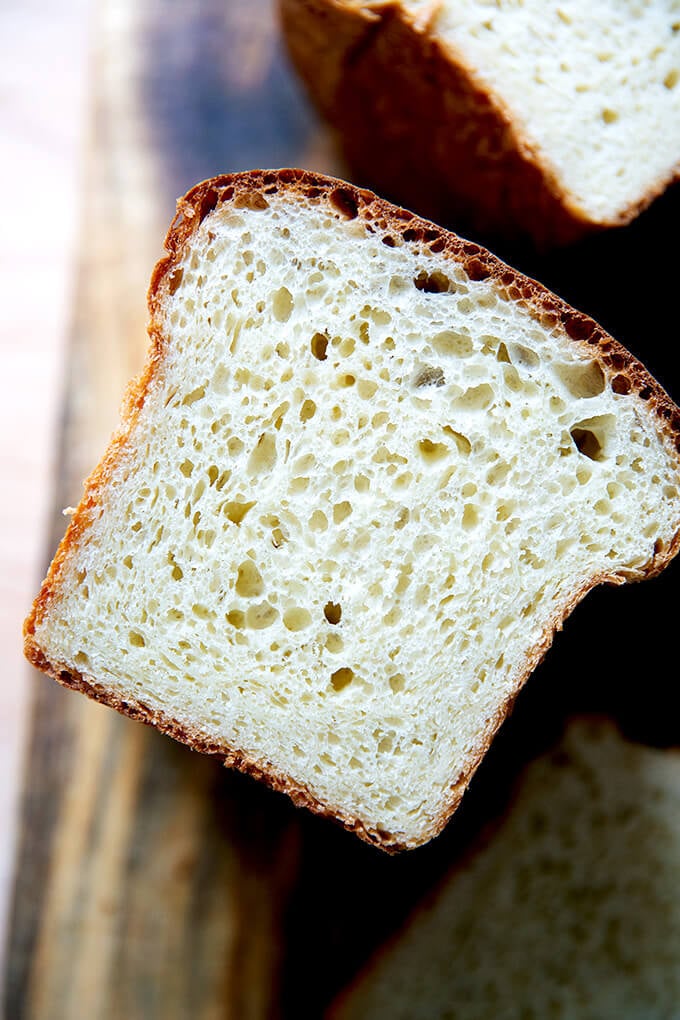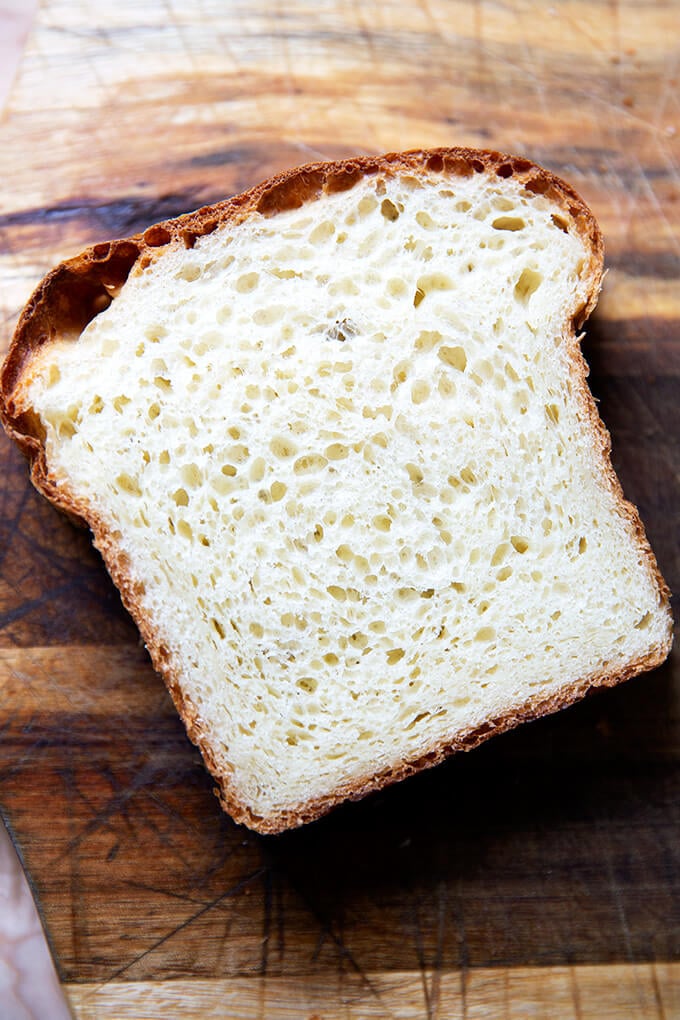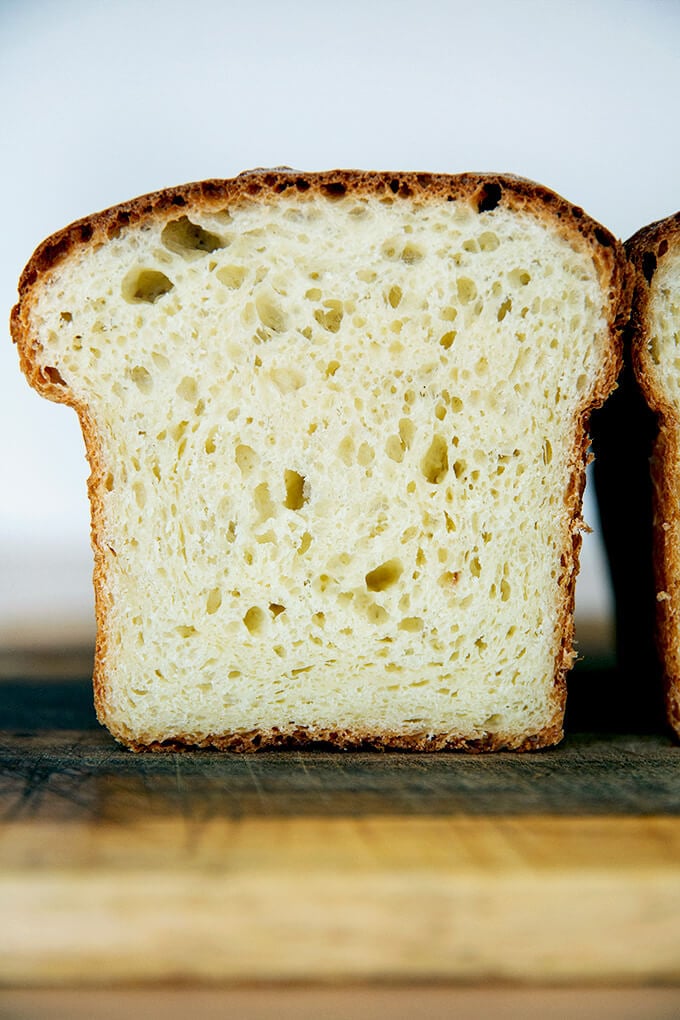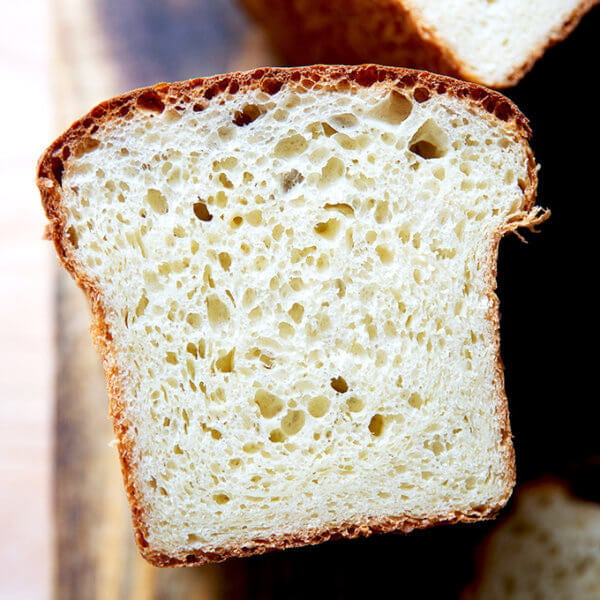Brioche is a soft-textured, slightly sweet, rich-tasting bread often made with sugar, milk, and heaps of eggs and butter. I recently came across a recipe calling for 6 eggs and 20 tablespoons of butter. The recipe yielded one loaf. One loaf! Two and a half sticks of butter for one loaf! Even if that brioche is the brioche to end all brioches, I will never make it. I can’t get myself to load dough up with so many enrichments knowing that a lean dough — one made with flour, water, and salt alone — can produce something completely delicious and satisfying. Moreover, I know that a modest amount of enrichments goes a long way. With challah, for example, the inclusion of two eggs and a little bit of oil and honey yields a light and airy loaf, golden-hued, soft-textured, and rich tasting. Would using even more eggs, oil, and honey make that challah that much better? I don’t know — I’ve never tried! But my hunch is no. For me, the law of diminishing returns applies with bread: at a certain point, more eggs, oil, butter, sugar, and milk won’t make a loaf of bread materially better. The first brioche bread recipe I made came from the original Tartine cookbook. I recently re-read the introduction to that recipe, which notes that “different types of brioche dough are made depending on how they will be used, with the formulas varying primarily in the percentage of butter.” Tartine intentionally makes a less-rich brioche because they use it for bread pudding and bostock, and they “need the crumb structure to hold up” to the rich ingredients they use in these recipes. And this is perhaps the most compelling reason in my mind to make a “light” brioche: if you view brioche mostly as a vehicle for making exceptional bread pudding, French toast, and the like, it might be wise to save all of those eggs and all of that butter for a recipe in which they’ll really shine.
About this Brioche
Until very recently, I noted in my favorite bread pudding recipe that the brioche recipe I used required 2 days of work. I warned: “Be sure to plan ahead!” Years after posting that recipe, I have learned that very good brioche can be made simply and quickly. The recipe below comes from my cookbook, Bread Toast Crumbs, though I’ve made some changes:
I’ve added weights for all of the ingredients because I’ve learned precision is important not only for dry ingredients but also wet. I offer a range of water quantities because I think depending on where you are, the amount of water you should use will vary. Instead of simply splitting the dough in half with forks and plopping it into the two buttered loaf pans, I now turn it out onto a lightly floured work surface, weigh each portion — I like the loaves to be as similarly sized as possible — and shape each into a batard. (Note: If you prefer the “peasant bread method” of never having to deal with a floured work surface or with shaping, you can use that method here.)
But the spirit of the recipe is still the same. This brioche is:
Light. (For reasons outlined above.) No-knead. (There’s just no need 😂😂😂.) Fast. (Start to finish it’s ready in about 4 hours, with about 25 minutes of active work. If you wish to do an overnight, fridge rise with the dough, however, you can do that, too.) Easy. (Many brioche recipes call for a stand mixer and softened butter, which you work into the dough piece by piece. This one calls for melted butter.) Delicious. (This brioche bread is nicely seasoned — subtly sweet, perfectly salted — and is an excellent candidate for bread pudding and French toast, overnight or otherwise.)
PS: No-Knead Brioche Buns
How to Make Brioche: A Step-by-Step Guide
Here’s the play by play: Gather your ingredients. Stir together the dry ingredients. Whisk together the wet. Combine the two until until you have a sticky dough ball: Let rise in a warm spot until doubled in volume, roughly two hours. Turn out onto a lightly floured work surface: Divide into two equal portions. Shape into batards. Transfer to buttered loaf pans and let rise until the dough crowns the rim of the pans. I love these pans for this recipe and others (namely this banana bread.) Transfer to a 375ºF oven for roughly 45 minutes. Let cool for at least 30 minutes before slicing. This brioche is delicious toasted with butter and jam, but it’s especially good in this brioche bread pudding recipe. And it freezes beautifully, too. See notes in the recipe below. 4.9 from 54 reviews This recipe is very similar to the one in my book, but I’ve added weights for all of the ingredients, and instead of simply dividing the dough and plopping it into bread pans, I now like to turn it out onto a floured work surface, divide it into two even portions (by weight), and shape it before transferring it to the buttered loaf pans. To create a warm spot for your bread to rise, turn your oven on for one minute, then shut it off. That brief blast of heat will create a cozy place for your bread to rise. As always: for best results, use a digital scale to weigh the ingredients. For a half recipe, see the notes below. Water: This is a very wet dough. If you live in a humid area or you have trouble working with sticky doughs, I would start with 1.75 cups (425 g). Reference the photos above and the video for how sticky/wet the dough should appear. If using active dry yeast: Sprinkle the yeast over the whisked together wet ingredients (which should be lukewarm to the touch) and let stand for 15 minutes or until it gets foamy; then proceed with the recipe. To freeze: Let the dough cool completely, then tuck into an airtight bag or vessel and freeze for up to 3 months (or a bit longer).
